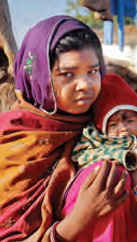
CORPORATE CITIZEN CLAPS FOR THE HUMANITARIAN INITIATIVE MADE BY THE DELHI SIKH GURDWARA MANAGEMENT COMMITTEE (DSGMC) IN LAUNCHING THE COUNTRY’S BIGGEST DIALYSIS FACILITY WITHIN THE ICONIC GURDWARA BANGLA SAHIB CAMPUS
The service will be delivered free of cost by the Guru Harkrishan Institute of Medical Sciences and Research Kidney Dialysis Hospital whereby close to 101 patients can be simultaneously dialysed while treating about 500 patients daily. Plans are to increase the capacity to 1000 beds, which will be serviced by a team of 90 paramedics and 24 doctors. It is expected to rope in renowned specialist dialysis doctors from across the country. The committee that has been running various medical facilities at different Gurudwaras across the national capital has named the dialysis centre as ‘The Panth Ratan Baba Harbans Singh Ji Dialysis block’ within the Bangla Sahib hospital complex. Besides, patients and their attendants will be provided free food during the course of the treatment from the gurudwara’s ‘langar’ (community kitchen) service. The round-the-clock facility has been built without any cash counters in its vicinity and once again speaks of the largess and generosity a hallmark of the Sikh community that has time and again stepped in to relieve humanity in times of crisis and calamities. The DSGMC’s idea is to tap contributions from not only the CSR mantle of corporate houses but also individuals, and government schemes such as ‘Ayushman Bharat’ in operating the hospital and its facilities. The committee’s mission is to provide expensive medical services to the needy either free or at the lowest possible pricing. While a functional hospital already exists within the Gurdwara campus, the committee plans to shift the entire existing medical infrastructure to a new building that houses the current dialysis centre in a block of the new building. The committee has also put in place a new diagnostic centre within the precincts of the Gurdwara Bangla Sahib, where services such as CT scan, MRI and Ultrasound imaging along with other tests will be made available at the lowest cost possible.
CORPORATE CITIZEN SLAPS THE INCREASE IN THE NUMBER OF GIRL CHILDREN BEING FORCED INTO MARRIAGE AS HIGHLIGHTED IN A NEW ANALYSIS BY UNITED NATIONS INTERNATIONAL CHILDREN’S EMERGENCY FUND (UNICEF)


Where at least 10 million more girls are at risk of being forced into marriage post the pandemic. The UNICEF states that 1.5 million under-18 girls in India are getting married every year and although deemed as ‘consensual’, there is a need for the government to push greater awareness on delaying marriage and pregnancy. The Global Girlhood Report 2020 has predicted that 5,00,000 more girls are at risk of becoming child brides, increasing the total number of child marriages to around 12.5 million annually. Ironically, data states that before the pandemic, as many as 100 million girls were at the risk of child marriage in the next decade with the encouraging aspect indicating significant reductions globally. The proportion of young brides declined 20% in the last decade from the 25%, translating into 25 million marriages that were averted. The study estimated that 650 million girls and women alive today got married in childhood about half of them in Bangladesh, Brazil, Ethiopia, India and Nigeria. In another development, the Third Committee of the United Nations General Assembly (UNGA) adopted its fourth resolution on child, early and forced marriage (CEFM) on 16 November, 2020. The World Health Organization lists complications during pregnancy and delivery as the leading cause of death among girls aged 15-19 years around the globe. The bulk of the abortions undergone by the girls in this age cohort is unsafe contributing to elevated mortality and morbidity levels. One measure that most countries were encouraged was on conditional cash transfers as one of the most successful interventions for improving girls’ retention or progress in school and delaying child marriage. The Indian government, too, has extended coverage of a conditional cash transfer programme and increased the social register by 1 million households as part of a broader economic stimulus plan. But more is needed and it has to penetrate deep within the societal fragmentations of customs, traditions and economic viability.